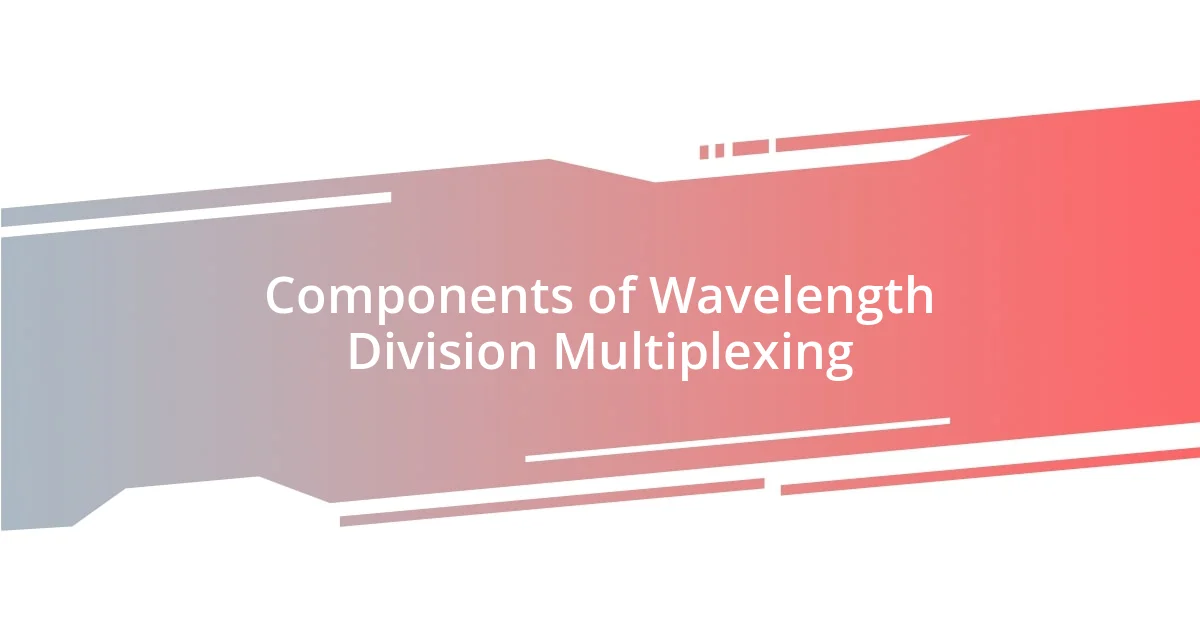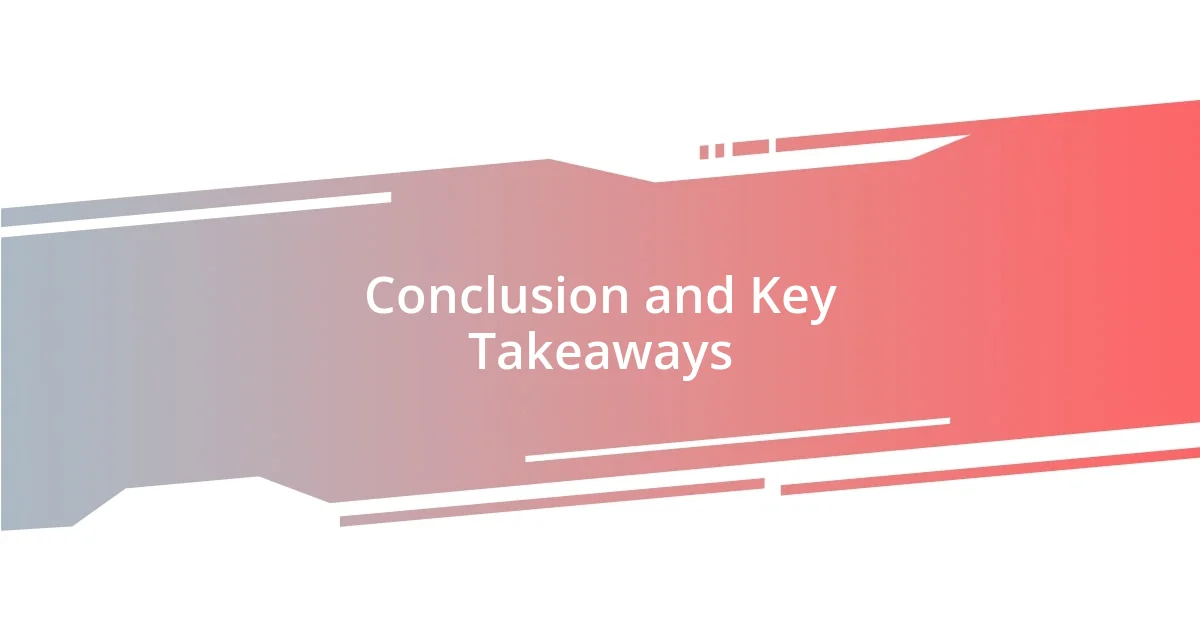Key takeaways:
- Wavelength Division Multiplexing (WDM) enables simultaneous transmission of multiple data signals over a single optical fiber, significantly enhancing communication efficiency.
- Key components of WDM include multiplexers, demultiplexers, optical amplifiers, and wavelength converters, each playing a vital role in maintaining signal integrity and performance.
- Diverse applications of WDM, such as in telecommunications and data centers, demonstrate its critical impact on modern communication and daily life, facilitating seamless connectivity and high-capacity data transfer.

Introduction to Wavelength Division Multiplexing
Wavelength Division Multiplexing, often abbreviated as WDM, is quite fascinating. I remember the first time I understood its concept; it felt like a light bulb moment! WDM allows multiple data signals to be sent simultaneously over a single optical fiber by using different wavelengths (or colors) of laser light. Isn’t it amazing how something as simple as light can enable such complex communication?
Thinking about it, WDM functions almost like a traffic management system for data. Each wavelength represents a different lane, ensuring that the signals don’t interfere with one another. This not only maximizes the capacity of the fiber but also significantly increases the efficiency of data transmission. Can you imagine the volume of information traveling through our networks because of this technology?
As I delved deeper into WDM, I was struck by its impact on modern communication. I often wonder how our daily lives would look without it. The ability to transmit vast amounts of data, whether for streaming video or conducting video conferences, hinges on this incredible technology. It’s a true testament to human ingenuity and the amazing advancements we can achieve in telecommunications.

Components of Wavelength Division Multiplexing
The components of Wavelength Division Multiplexing are fundamental to its operation. At the heart of WDM systems are multiplexers and demultiplexers. I remember the first time I saw these devices in action; it felt like watching a magical transformation! The multiplexer combines several wavelengths into one fiber, while the demultiplexer does the reverse, separating the wavelengths at the receiving end. This duo plays a crucial role in maintaining the integrity of each signal, ensuring they reach their destination without interference.
A lesser-known but equally important component is the optical amplifier. I recall being fascinated when I learned how these amplifiers boost the signals transmitted over long distances. It’s almost like adding energy drinks to a long road trip—without them, the signals would degrade over time. Optical amplifiers ensure that the data remains strong and clear, allowing for efficient communication even across vast networks.
Lastly, there are wavelength converters that I find particularly intriguing. These devices enable signals to switch from one wavelength to another, providing flexibility and reducing congestion on individual wavelengths. It reminds me of switching lanes during heavy traffic—sometimes a quick change can save so much time. Understanding these components has truly enriched my appreciation of WDM and its impact on our connected world.
| Component | Function |
|---|---|
| Multiplexer | Combines multiple wavelengths into a single fiber |
| Demultiplexer | Separates wavelengths at the receiving end |
| Optical Amplifier | Boosts signals over long distances |
| Wavelength Converter | Switches signals from one wavelength to another |

Understanding Wavelength Assignment Techniques
Understanding wavelength assignment techniques in Wavelength Division Multiplexing feels like unraveling a complex puzzle. I vividly recall my initial confusion when I first encountered the concept of wavelength assignment. It’s fascinating how wavelengths are allocated based on specific criteria, optimizing performance and reducing interference. Each technique has its unique advantages, and comprehending them has truly deepened my understanding of WDM.
Here are some common wavelength assignment techniques:
- Fixed Wavelength Assignment: Each user is assigned a specific wavelength permanently. It’s like having your own dedicated highway lane—consistent but inflexible.
- Dynamic Wavelength Assignment: Wavelengths can be assigned on an as-needed basis, adapting to traffic demand. I find this incredibly efficient, much like adjusting the traffic lights during rush hour to ease congestion.
- Wavelength Rotation: This method rotates wavelengths among users, optimizing resource use. I remember feeling exhilarated when I first grasped how this can significantly enhance network efficiency.
- Wavelength Reservation: Similar to booking a seat on a flight, this method allows users to reserve wavelengths in advance, ensuring availability when needed. It’s such a practical approach to manage peaks in data transmission.
As I explored these techniques, I realized how crucial they are for ensuring smooth and efficient data flow in networks. Each choice reflects a deeper understanding of network demands, and I can’t help but appreciate the creativity behind these solutions.

Applications of Wavelength Division Multiplexing
The applications of Wavelength Division Multiplexing (WDM) are truly fascinating and diverse. When I first encountered the idea of using WDM for fiber optic communication, I was amazed to learn how it increases the capacity of data transmission over a single fiber. It’s like adding extra lanes to a busy highway—suddenly, the flow of traffic becomes smoother and faster! One of the most significant applications is in telecommunications networks, where WDM allows multiple phone calls, data, and video streams to coexist without interference, dramatically improving performance.
I vividly recall a project where we explored deploying WDM in data centers. The sheer volume of data being transmitted daily is staggering, and WDM plays a vital role in efficiently routing that information. I found it thrilling to think about how cloud services, which many of us rely on today, leverage WDM technology to meet the surging demands for bandwidth. Imagine being able to simultaneously stream a movie while participating in a video conference—all due to the power of WDM working behind the scenes to ensure everything runs seamlessly.
Moreover, WDM finds exciting applications in metropolitan area networks (MANs). I often think about my daily commute through the city—the bustling energy and the connectivity of people moving in different directions. WDM supports this metropolitan fabric by enabling high-capacity connections between various local networks, improving infrastructure for everything from education to healthcare. It’s incredible how this technology can enhance our daily lives, isn’t it? Understanding these applications has not only deepened my technical knowledge but also made me appreciate the extraordinary capabilities of modern communication systems.

Conclusion and Key Takeaways
Reflecting on my journey with Wavelength Division Multiplexing, I realize it’s been much more than a technical exploration; it’s a continuous learning experience. I remember the moments of clarity when complex concepts suddenly clicked. It’s like when a musician finally hears how each note fits into a larger melody.
One key takeaway is how essential understanding wavelength assignment techniques is for optimizing network performance. As I navigated through the different methods, I felt like a traveler charting a map through an uncharted territory. Dynamic wavelength assignment particularly resonated with me because it perfectly illustrates the importance of flexibility in technology, much like adapting to the movements in a crowded dance floor.
Knowing how diverse applications of WDM impact our daily lives has truly enlightened me. The thought that every streamed video, every smooth video call, and efficient data transfer hinges on these underlying technologies is astonishing. Have you ever paused to consider how these unseen systems enhance your everyday experiences? It’s a reminder that behind the screens and connections, intricate technologies are constantly at work, making our modern lives possible.















